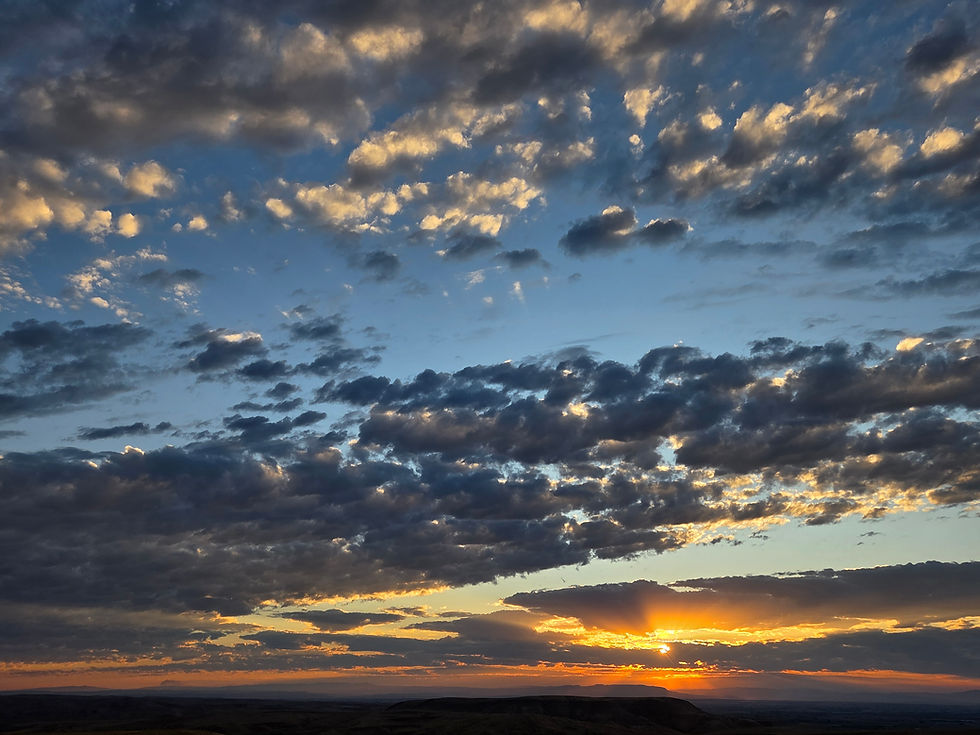Owyhee or Owyhees: Which One Is It?
- Katalin Plummer

- Apr 30, 2021
- 3 min read
Updated: Jul 23, 2022

When I first started at Friends of the Owyhee, one of the first conversations I had with Tim was about this very subject. He clarified that the organization is named Friends of the Owyhee—singular—not Owyhees, emphasizing how important it was to specify what exactly it is we are working to protect and promote. Now, to be totally transparent, I wasn’t sure what the difference was before I started interviewing for my position (and thank goodness I looked into it, too). So, I’m here to give you a hand with my relatively newfound knowledge.
Before we get into it, though, let’s remember a couple of important nuggets of info.
Whose land is this? Whenever we talk about or interact with the landscape itself, it’s incredibly important that we remember whose landscape it is. The Indigenous peoples of the Shoshone-Bannock and Numu (Northern Paiute) tribes were forcibly removed from this land. While we call it the Owyhee, the Shoshone-Bannock and Numu peoples know this region as their ancestral home. This is indeed American public land, and therefore belongs to all of us, but it was Indigenous (Native) American land first. This is a good practice to follow no matter where you live—you can find out whose land you are on by visiting Native Land’s map of Indigenous peoples.
Where does the name “Owyhee” come from? Sammy has talked about the colonial exploration of this area in a previous blog post about the beaver (and what a great read it is!). As has been recorded in several journals and maps (including trapper Peter Skene Ogden from his 1825 expedition to Utah), “Owyhee” is a once-common English spelling and pronunciation of “Hawai’i”. During an 1819 exploration of what is now known as the Owyhee River, three Native Hawai’ian trappers were dispatched by explorer Donald MacKenzie to explore the uncharted waters. Unfortunately, they never returned to the rendezvous near the Boise River, presumably dead. In their honor, the area was named Owyhee. (The river was also referred to as the Owyhee River or River Owyhee, but it also had names like “Sandwich Island River”, so that’s a post for another day.)
There is some confusion regarding the nomenclature out there on the Internet, like this website I found that refers to the Owyhee Canyonlands as “the Owyhees”. So, without any further ado, let’s settle it once and for all: which one is it, Owyhee or Owyhees?
The Owyhee
In the singular, the Owyhee refers to the ecoregion in southeastern Oregon, southwestern Idaho, and northern Nevada (see map below). An ecoregion is defined as “an ecologically and geographically defined area” that contains “characteristic, geographically distinct assemblages of natural communities and species”.

In plain speech, an ecoregion is a large portion of land that has a similar landscape and similar plants and animals all throughout. That means that, despite its large size, you can see the same plants, animals, and even weather patterns all throughout the Owyhee. Thanks to its cool name, the landscape is also the namesake for a lot of businesses in the area, including the Owyhee—home to the Owyhee Plaza Hotel and the Owyhee Tavern—Owyhee Produce, Owyhee Management LLC, and many more.
The Owyhees
So, “Owyhee” refers to the entire ecoregion, as does the name “Owyhee Canyonlands”. “The Owyhees” (plural this time) refers to a specific portion of the greater ecoregion: the Owyhee Mountains. This mountain range extends through Owyhee County, Idaho and Malheur County, Oregon, although it’s also visible from Ada County, Idaho. The Owyhee Mountains serve as the divide between the Owyhee watershed and the southwest side of the Treasure Valley.
Now, which one is Friends of the Owyhee working for?
In short, both. The Owyhees Mountains are a part of the Owyhee region, and here at Friends of the Owyhee, we are passionate about being stewards to the region as a whole. Forget arbitrary, manmade borders of states—nature sure doesn’t give a hoot about them, so we follow her lead. It’s all connected, so anything that happens in the region in Idaho affects Oregon and Nevada, and vice versa. With state and federal governments being established the way they are, it does present a challenge to work across state lines, but hey, it’s worth it.
The takeaway
The phrases “Owyhee” and “Owyhee Canyonlands” refer to the large swath of land that extends between southeastern Oregon, southwestern Idaho, and northern Nevada. “The Owyhees” is used to refer to the Owyhee Mountains in Owyhee and Malheur Counties. Friends of the Owyhee aims to protect and promote responsible recreation in the entirety of the Owyhee (including the Owyhees). Now that that’s settled, who wants to count how many times the word “Owyhee” appears in this post? (Not it. Looks like it’s your job, dear reader.)





Comments